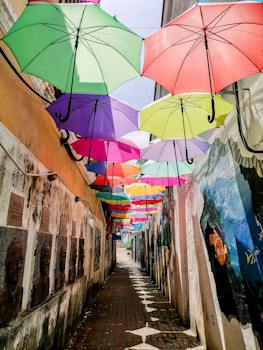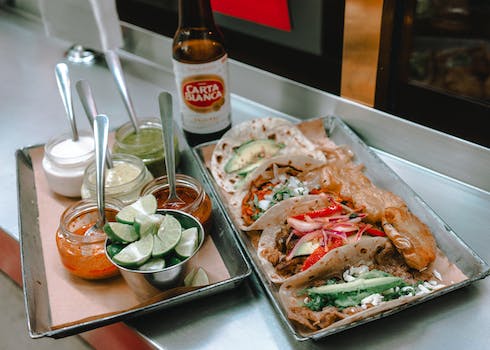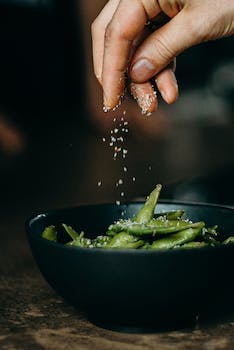

-
Table of Contents
Recalling Sankranti: Relive the Traditions, Embrace the Nostalgia.
Introduction
Recalling Sankranti: A Journey Down Memory Lane is a nostalgic exploration of the traditional Indian festival of Sankranti. This article takes readers on a journey back in time, delving into the rich cultural significance and cherished memories associated with this vibrant celebration. From the mouthwatering delicacies to the joyous festivities, this introspective piece aims to evoke a sense of nostalgia and appreciation for the traditions that make Sankranti a truly unforgettable experience.
The Significance of Sankranti in Indian Culture
Recalling Sankranti: A Journey Down Memory Lane
Sankranti, also known as Makar Sankranti, is a significant festival celebrated in various parts of India. It holds immense cultural and religious importance, marking the transition of the sun into the zodiac sign of Capricorn. This auspicious occasion is observed on the 14th of January every year, and it is a time when people come together to celebrate the harvest season and offer prayers to the gods for a bountiful year ahead.
The significance of Sankranti in Indian culture is deeply rooted in ancient traditions and beliefs. It is believed that on this day, the sun begins its northward journey, bringing longer days and the promise of warmer weather. This transition is seen as a symbol of new beginnings and the triumph of light over darkness. It is a time when people express gratitude for the abundance of nature and seek blessings for prosperity and happiness.
One of the most prominent rituals associated with Sankranti is the flying of kites. This tradition is believed to have originated in Gujarat and has now spread to other parts of the country. The sky is filled with colorful kites of all shapes and sizes, as people engage in friendly competitions to see who can keep their kite flying the longest. The sight of hundreds of kites soaring high in the sky is truly mesmerizing and adds to the festive atmosphere.
Another important aspect of Sankranti is the preparation and consumption of special delicacies. In different regions of India, various traditional dishes are prepared using ingredients that are abundant during this season. In Maharashtra, for example, people make tilgul, a sweet made from sesame seeds and jaggery, which symbolizes the exchange of sweet words and good wishes. In Tamil Nadu, a dish called Pongal, made from freshly harvested rice and lentils, is prepared and offered to the gods before being shared with family and friends.
Sankranti is also a time for families to come together and celebrate. People visit their relatives and exchange gifts and greetings. It is a time when old friendships are renewed, and new bonds are formed. The festival brings people from different communities and backgrounds together, fostering a sense of unity and harmony.
In addition to its cultural significance, Sankranti also holds religious importance. Many people take a dip in holy rivers, such as the Ganges, to cleanse themselves of sins and seek blessings. Temples are adorned with flowers and lights, and special prayers and rituals are performed to honor the gods. The festival is a time for spiritual reflection and seeking divine guidance for the year ahead.
As the day comes to an end, the sky is illuminated with bonfires, a tradition known as Lohri in some parts of India. People gather around the fire, singing and dancing to traditional folk songs. The warmth of the fire and the joyous atmosphere create memories that last a lifetime.
In conclusion, Sankranti is a festival that holds immense significance in Indian culture. It is a time when people come together to celebrate the harvest season, express gratitude, and seek blessings for a prosperous year ahead. The flying of kites, the preparation of special delicacies, and the exchange of gifts and greetings are all integral parts of this festive occasion. Sankranti is a time for unity, reflection, and celebration, and it continues to be cherished by people of all ages and backgrounds.
Traditional Rituals and Customs of Sankranti Celebrations

Sankranti, also known as Makar Sankranti, is a popular Hindu festival celebrated in various parts of India. It marks the transition of the sun into the zodiac sign of Capricorn, and is considered a significant event in the Hindu calendar. The festival is celebrated with great enthusiasm and fervor, and is known for its traditional rituals and customs.
One of the most prominent customs of Sankranti is the flying of kites. This tradition is believed to have originated in Gujarat, where people gather on rooftops and fly colorful kites throughout the day. The sky becomes a vibrant canvas, filled with kites of all shapes and sizes. The sight of hundreds of kites soaring high in the sky is truly mesmerizing. It is believed that flying kites during Sankranti brings good luck and prosperity.
Another important ritual of Sankranti is the preparation and consumption of special dishes. One such dish is tilgul, which is made from sesame seeds and jaggery. Tilgul holds great significance during Sankranti, as it symbolizes the exchange of sweet words and good wishes among people. It is customary to offer tilgul to friends and family members, while saying "tilgul ghya, god god bola" which means "accept this tilgul and speak sweet words". This tradition strengthens the bond of love and friendship among people.
In addition to tilgul, another popular dish prepared during Sankranti is pongal. Pongal is a sweet rice dish made with jaggery, ghee, and cashew nuts. It is cooked in a traditional earthen pot, and is offered to the Sun God as a mark of gratitude for a bountiful harvest. The aroma of freshly cooked pongal fills the air, creating a festive atmosphere.
Apart from these rituals, Sankranti is also a time for people to come together and celebrate with music and dance. In many parts of India, traditional folk dances like garba and dandiya are performed during Sankranti. These dances are accompanied by lively music and colorful costumes, adding to the festive spirit. People of all ages participate in these dances, creating a sense of unity and joy.
Sankranti is also a time for people to express their gratitude towards nature and the environment. In rural areas, farmers decorate their cattle with colorful attire and take them on a procession. This is known as the "Gai Jatra" or the procession of cows. It is believed that this procession brings good fortune and prosperity to the village. Additionally, people also make offerings to the rivers and water bodies, thanking them for their life-giving properties.
In conclusion, Sankranti is a festival that is deeply rooted in tradition and customs. From flying kites to preparing special dishes, from performing traditional dances to expressing gratitude towards nature, Sankranti is a celebration of joy, unity, and gratitude. It is a time for people to come together, strengthen their bonds, and create lasting memories. As we recall the traditions and customs of Sankranti, we are reminded of the rich cultural heritage of India and the importance of preserving and celebrating our traditions.
Nostalgic Memories of Sankranti Celebrations from Childhood
Recalling Sankranti: A Journey Down Memory Lane
Nostalgic Memories of Sankranti Celebrations from Childhood
As the winter chill sets in and the aroma of freshly harvested crops fills the air, it is impossible not to reminisce about the joyous Sankranti celebrations from our childhood. Sankranti, also known as Makar Sankranti, is a festival that marks the transition of the sun into the zodiac sign of Capricorn. It is celebrated with great fervor and enthusiasm in various parts of India, and each region has its unique customs and traditions associated with this auspicious occasion.
One of the most cherished memories of Sankranti is waking up early in the morning to the sound of melodious folk songs and the rhythmic beats of the dhol. The entire neighborhood would come alive with the vibrant colors of traditional attire as families gathered on their rooftops to fly kites. The sky would be adorned with a myriad of colorful kites, and the sight of them soaring high brought a sense of exhilaration and camaraderie.
The festivities would continue throughout the day, with families and friends coming together to prepare traditional delicacies. The aroma of til ladoos, gur rewari, and gajak would waft through the air, tempting everyone's taste buds. The kitchen would be a hub of activity, with women clad in bright sarees, laughing and sharing stories as they cooked up a storm. The joy of indulging in these homemade treats, made with love and care, is a memory that still brings a smile to our faces.
Another highlight of Sankranti celebrations was the exchange of til-gul, a sweet made from sesame seeds and jaggery. This exchange symbolized the spreading of sweetness and harmony among family and friends. We would eagerly wait for our relatives to arrive, bearing plates filled with these delectable treats. The air would be filled with laughter and joy as we exchanged til-gul and wished each other a happy and prosperous year ahead.
One cannot forget the traditional games and activities that were an integral part of Sankranti celebrations. From tug-of-war to sack races, the streets would transform into a playground for children and adults alike. The competitive spirit would be high, and the sound of laughter and cheers would echo through the neighborhood. These games not only brought the community together but also instilled a sense of unity and sportsmanship among us.
As the day drew to a close, the evening sky would be illuminated with bonfires, a tradition known as Lohri in some regions. Families would gather around the bonfire, singing and dancing to folk songs, while the warmth of the fire provided respite from the winter chill. The crackling sound of the firewood and the flickering flames created a mesmerizing ambiance, making it a truly magical experience.
In conclusion, Sankranti celebrations from our childhood hold a special place in our hearts. The joy, laughter, and togetherness that filled the air during this festival are memories that we will cherish forever. From flying kites to indulging in homemade delicacies, from exchanging til-gul to participating in traditional games, every aspect of Sankranti brought us closer to our roots and strengthened the bonds of love and friendship. As we grow older, these nostalgic memories serve as a reminder of the simple pleasures in life and the importance of celebrating our cultural heritage.
Q&A
1. What is Sankranti?
Sankranti is a Hindu festival celebrated in India, marking the transition of the sun into the zodiac sign of Capricorn.
2. When is Sankranti celebrated?
Sankranti is typically celebrated on January 14th or 15th each year, depending on the Hindu calendar.
3. What are some common traditions associated with Sankranti?
During Sankranti, people fly kites, exchange sweets, and participate in various cultural activities. It is also a time for family gatherings and feasting on traditional dishes.
Conclusion
In conclusion, "Recalling Sankranti: A Journey Down Memory Lane" is a nostalgic and reflective account that takes readers on a journey through the author's memories of the Sankranti festival. Through vivid descriptions and personal anecdotes, the author captures the essence of this traditional Indian festival and its significance in their life. The narrative evokes a sense of nostalgia and highlights the importance of cultural traditions in shaping one's identity and fostering a sense of belonging. Overall, the book offers a heartfelt and engaging exploration of the Sankranti festival and its enduring impact on the author's life.












